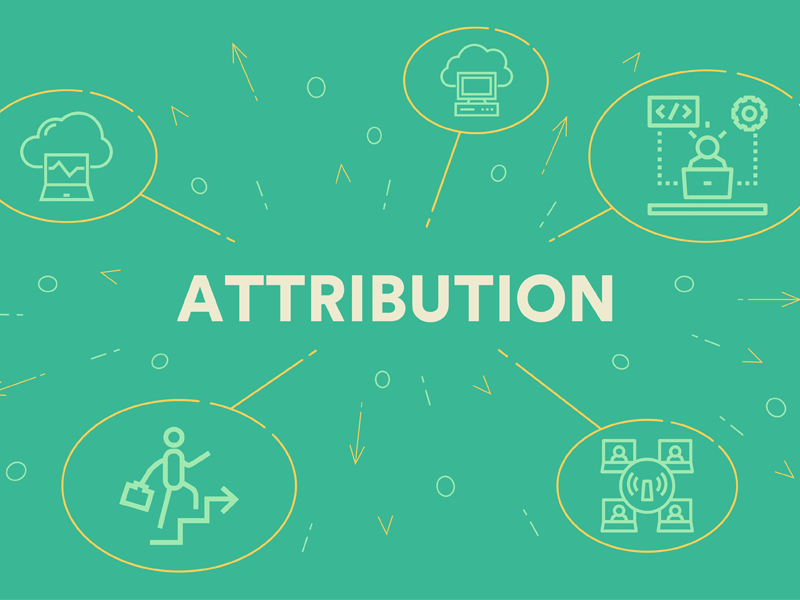
It’s rarely the case that a visitor finds your site or clicks on an ad and immediately converts into a sale or lead. In most cases, people will visit your site multiple times before converting; they’ll discover your site, return the next week directly and be served a remarketing ad the following day before finally converting.
So, the question is, what channel gets credit for the ultimate conversion? Was it your site or the ad you ran on social platforms? With multiple touchpoints in the buyers’ journey, each platform plays a role on the path to conversion.
What are marketing attribution models?
Attribution modelling is a framework responsible for distinguishing which touchpoints should receive credit for the conversion. Each attribution model distributes the value of a conversion across each touchpoint differently.
An attribution model comparison tool allows you to analyse how each model distributes the value of a conversion. By analysing each attribution model, you can get a better idea of ROI for each marketing channel.
When it comes to choosing which attribution model is best for your marketing goals, there is no “best”. There are varying factors that dictate which model is better for your marketing purpose than the other, such as business goals or buying cycles. Attribution modelling is ultimately an analysis tool, so don’t restrict yourself to one. Rather compare performance under each model to understand the importance of multiple touchpoints in the buyers’ journey.
What are the different types of attribution models?
Last Interaction Attribution Model – also referred to as ‘last-click’ or ‘last-touch’. This model gives all of the credit to the last interaction your business had with a customer before they converted.
Pros & Cons:
It is the simplest to implement and evaluate and often is the most accurate, however, people access channels through multiple devices, clear cookies, or use multiple browsers which makes it difficult to track their entire journey towards a conversion. This means the ‘Last Interaction Attribution Model’ ignores all prior interactions before the conversion where most of the initial interactions and touchpoints were vital in the buyers’ journey.
This model is a good fit if you have a short buyers’ journey with limited touchpoints towards a conversion.
First Interaction Attribution Model – similar to ‘Last Interaction’, it gives full credit for a conversion to your business’s first interaction with the customer.
Pros & Cons:
Much like ‘Last Interaction’, this model is simple and straightforward, but it ignores the effects of any further marketing channels that come after the initial touchpoint.
This model is a good fit for you if you have a short buyers’ journey where there is a tendency to convert customers immediately or if your main business goal is bringing in new top-of-the-funnel customers.
Last Non-Direct Click Attribution Model – more helpful than a standard ‘Last-Click’ model. The full value of the credit is assigned to a single interaction but eliminates any direct interactions that occur before the conversion. By eliminating direct traffic in a Last-Click model, you can better assign value to the marketing strategy that led to a conversion.
Pros & Cons:
Eliminating direct clicks makes this more insightful than the Last Interaction Attribution Model, however, it still assigns 100% of the value to one interaction. If your customer had four touchpoints prior to the last non-direct click, it is completely ignored.
Linear Attribution Model – Splits the credit for the conversion across all touchpoints the customer had with your business.
Pros & Cons:
This model gives you a more balanced look at your marketing strategy than a single-event attribution model, however, it also assigns equal importance to all touchpoints. Some marketing strategies are more effective than others, this model will not highlight which that is. That said, this model demonstrates how each channel holds value, so it is good to use when explaining to your client the channel importance in the buyers’ journey.
Time Decay Attribution Model – Similar to ‘Linear Attribution’, it spreads out the credit across multiple events, however, unlike ‘Linear Attribution’, it takes into account when the touchpoint occurred where interactions that happened closer to a time of purchase hold more value.
Pros & Cons:
If relationship-building is your main goal for success, using ‘Time Decay Attribution’ can help to conceptualise it, but keep in mind that this model minimises the effect of top-of-the-funnel marketing techniques. An example of when to use ‘Time Decay Attribution Modelling’ is when you’re dealing with a particularly long sales cycle such as expensive B2B purchases.
Position-Based Attribution Model – also called U-shaped attribution, splits the credit for conversion between a prospects’ first interaction with your brand and the moment they convert. In this model, 40% of the credit is given to these two touchpoints where the remaining 20% is spread across any other interactions that happened in the middle.
Pros & Cons:
This is a strong model for business’ with multiple touchpoints prior to conversion as it gives credit to every interaction along the buyers’ journey, with the strongest being the initial interaction and the interaction that prompted conversion.
Custom Attribution Model – allows businesses to give a custom amount of weight to whatever touchpoint they deem the most important.
Pros & Cons:
This model provides the most nuanced look at what’s bringing in conversions, however, it can be difficult to create and requires a lot of data. Business’ that have a long buyers’ journey and plenty of data on hand are the best candidates for using Custom Attribution Modelling.
There are many versions of attribution modelling, each with their pros and cons, but with a bit of research and a sound strategy, it is easy to identify which attribution model you need.
Ole!Connect have over 10 years of industry experience in the digital marketing realm, so connect with us to take advantage of our attribution modelling expertise.